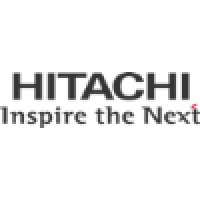
Hitachi Payment Services Pvt. Ltd. Company Cyber Security Posture
hitachi-payments.comWelcome to Hitachi Payment Services. We are a leading payment solutions provider that empowers financial institutions and merchant / e-commerce aggregators with a comprehensive array of technology-led payment solutions. Our cash and digital payment solutions enable high level of customer satisfaction and have redefined the way payments are fulfilled today. With extensive industry know-how and robust payments infrastructure, we offer customisable solutions with speed to market. Our offerings under cash platform include ATM Services, Cash Recycling Machines, ATM Software Platforms and White Label ATM - Hitachi Money Spot ATM. Offerings under digital platform include POS Solutions, Internet Payment Gateway Solutions, Toll & Transit Solutions, Digital Payment Platform (Bharat QR, UPI), Risk Management & Analytics, Reconciliation & Settlement Services, Merchant Services and Card Issuance Solutions As a 100% subsidiary of Hitachi Ltd., we leverage on Hitachi’s Social Innovation business philosophy, technology expertise and customer-centric approach to provide you a world-class platform today and for the future.
HPSPL Company Details
hitachi-payment-services-pvt-ltd
2220 employees
30886
52
Financial Services
hitachi-payments.com
Scan still pending
HIT_1935186
In-progress
Between 800 and 900
This score is AI-generated and less favored by cyber insurers, who prefer the TPRM score.
 HPSPL Global Score
HPSPL Global Score.png)

Hitachi Payment Services Pvt. Ltd. Company Scoring based on AI Models
| Model Name | Date | Description | Current Score Difference | Score |
|---|---|---|---|---|
| AVERAGE-Industry | 03-12-2025 | This score represents the average cybersecurity rating of companies already scanned within the same industry. It provides a benchmark to compare an individual company's security posture against its industry peers. | N/A | Between 800 and 900 |
Hitachi Payment Services Pvt. Ltd. Company Cyber Security News & History
| Entity | Type | Severity | Impact | Seen | Url ID | Details | View |
|---|---|---|---|---|---|---|---|
| Hitachi Payment Services Pvt. Ltd. | Breach | 100 | 5 | 10/2016 | HIT173651123 | Link | |
Rankiteo Explanation : Attack threatening the organization’s existenceDescription: Several Indian banks have taken drastic steps in response to a security breach that may have compromised up to 3.25 million debit cards—or 0.5% of the approximately 700 million debit cards that Indian banks have issued. The financial institution is Hitachi Payment Services, a subsidiary of Hitachi Ltd. that oversees ATM network processing for Yes Bank Ltd., according to banking industry insiders. After that, the State Bank of India quickly disabled a few clients' debit cards, and it was currently replacing those cards to stop fraud. The top three private sector lenders, ICICI Bank, HDFC Bank, and Axis Bank, each stated in separate announcements that there may have been card account breaches following usage at non-bank ATMs. Additionally, certain consumers' debit cards are being reissued by Standard Chartered's Indian division. | |||||||
Hitachi Payment Services Pvt. Ltd. Company Subsidiaries

Welcome to Hitachi Payment Services. We are a leading payment solutions provider that empowers financial institutions and merchant / e-commerce aggregators with a comprehensive array of technology-led payment solutions. Our cash and digital payment solutions enable high level of customer satisfaction and have redefined the way payments are fulfilled today. With extensive industry know-how and robust payments infrastructure, we offer customisable solutions with speed to market. Our offerings under cash platform include ATM Services, Cash Recycling Machines, ATM Software Platforms and White Label ATM - Hitachi Money Spot ATM. Offerings under digital platform include POS Solutions, Internet Payment Gateway Solutions, Toll & Transit Solutions, Digital Payment Platform (Bharat QR, UPI), Risk Management & Analytics, Reconciliation & Settlement Services, Merchant Services and Card Issuance Solutions As a 100% subsidiary of Hitachi Ltd., we leverage on Hitachi’s Social Innovation business philosophy, technology expertise and customer-centric approach to provide you a world-class platform today and for the future.
Access Data Using Our API

Get company history
.png)
HPSPL Cyber Security News
Cardless ATM Market Size & Share | Industry Growth [2032]
Global Cardless ATM Market size was valued at USD 3.2 billion in 2023 and is poised to grow from USD 3.57 billion in 2024 to USD 8.52 billion by 2032, ...
Hitachi Rail acquires Thales' Ground Transportation Systems for €1,660m : May 31, 2024
London, May 31, 2024 – Hitachi Rail announced today the completion of its €1,660m acquisition of Thales' Ground Transportation Systems (GTS) ...
Hitachi hackers cashed in on security gaps in India's worst-ever cybersecurity breach
Audit report of India's worst cyber attack till date has revealed that an advanced malware can overcome most anti-malware walls.
Security breach feared in up to 3.25 million Indian debit cards
A slew of banks in India are replacing or asking their customers to change security codes of as many as 3.25 million debit cards due to fears that the card ...
International Strategy to Better Protect the Financial System Against Cyber Threats
A vision for how the international community could better protect the financial system against cyber threats.
Hitachi Payment Services completes acquisition of Writer Corporation's cash management biz
Through Hitachi Cash Management Services, we will be able to deliver comprehensive services to financial institutions and retail merchants," ...
It's confirmed! Breach in Hitachi security system led to debit card fraud
The puzzle behind one of the biggest cyber security breaches -that compromised 3.2 million cards last year in 2016- has been resolved.
Malware caused India’s biggest debit card data breach: Audit report
The largest data breach in India's banking system, which affected nearly 3.2 million debit cards in 2016, was caused by a malware injection ...
RBI fines YES Bank for failing to report cyber security attack on its ATM network
The Reserve Bank of India (RBI) has imposed a fine of Rs 6 crore on YES Bank for failing to report a cyber security breach of its ATM ...

HPSPL Similar Companies

Ameriprise Financial Services, LLC
At Ameriprise Financial, we have been helping people feel more confident about their financial future for 130 years. With extensive investment advice, asset management and insurance capabilities and a nationwide network of approximately 10,000 financial advisors*, we have the strength and expertise

Ameriprise Financial Services, LLC
At Ameriprise Financial, we have helped our clients feel confident about their financial futures for more than 125 years. Our network of more than 10,000 financial advisors delivers personalized financial advice to help clients reach their goals. Ameriprise has corporate locations throughout the

National Agricultural Cooperative Federation
The NACF, or 'NongHyup' as it is called in Korean, was established to contribute to improve the economic, social and cultural status of farmers and contribute to the balanced development of the national economy. To meet these goals, we are engaged in Extension and Support Unit, Agribusiness Group, a

Moody's Corporation
In a world shaped by increasingly interconnected risks, Moody’s helps customers develop a holistic view of these risks to advance their business and act decisively. With a rich history of expertise in global markets and a diverse workforce in more than 40 countries, Moody’s unites the brightest mind

Old Mutual
Old Mutual Limited is a listed company on the Johannesburg Stock Exchange and has secondary listings on the London, Malawi, Namibia and Zimbabwe stock exchanges. As a Pan-African financial services company, we are focused on Africa, her needs and her people. Together with you, we have educated our

Dubai Holding
Dubai Holding is a diversified global investment company that continues to power Dubai’s growth across 10 sectors, including Real Estate, Hospitality, Leisure & Entertainment, Media, ICT, Design, Education, Retail, Manufacturing & Logistics and Science. Since 2004, we have made strides with an eff

Frequently Asked Questions (FAQ) on Cybersecurity Incidents
HPSPL CyberSecurity History Information
Total Incidents: According to Rankiteo, HPSPL has faced 1 incidents in the past.
Incident Types: The types of cybersecurity incidents that have occurred include ['Breach'].
Total Financial Loss: The total financial loss from these incidents is estimated to be {total_financial_loss}.
Cybersecurity Posture: The company's overall cybersecurity posture is described as Welcome to Hitachi Payment Services. We are a leading payment solutions provider that empowers financial institutions and merchant / e-commerce aggregators with a comprehensive array of technology-led payment solutions. Our cash and digital payment solutions enable high level of customer satisfaction and have redefined the way payments are fulfilled today. With extensive industry know-how and robust payments infrastructure, we offer customisable solutions with speed to market. Our offerings under cash platform include ATM Services, Cash Recycling Machines, ATM Software Platforms and White Label ATM - Hitachi Money Spot ATM. Offerings under digital platform include POS Solutions, Internet Payment Gateway Solutions, Toll & Transit Solutions, Digital Payment Platform (Bharat QR, UPI), Risk Management & Analytics, Reconciliation & Settlement Services, Merchant Services and Card Issuance Solutions As a 100% subsidiary of Hitachi Ltd., we leverage on Hitachi’s Social Innovation business philosophy, technology expertise and customer-centric approach to provide you a world-class platform today and for the future..
Detection and Response: The company detects and responds to cybersecurity incidents through {description_of_detection_and_response_process}.
Incident Details
Incident 1: Ransomware Attack
Title: {Incident_Title}
Description: {Brief_description_of_the_incident}
Date Detected: {Detection_Date}
Date Publicly Disclosed: {Disclosure_Date}
Date Resolved: {Resolution_Date}
Type: {Type_of_Attack}
Attack Vector: {Attack_Vector}
Vulnerability Exploited: {Vulnerability}
Threat Actor: {Threat_Actor}
Motivation: {Motivation}
Incident 2: Data Breach
Title: {Incident_Title}
Description: {Brief_description_of_the_incident}
Date Detected: {Detection_Date}
Date Publicly Disclosed: {Disclosure_Date}
Date Resolved: {Resolution_Date}
Type: {Type_of_Attack}
Attack Vector: {Attack_Vector}
Vulnerability Exploited: {Vulnerability}
Threat Actor: {Threat_Actor}
Motivation: {Motivation}
Common Attack Types: As of now, the company has not encountered any reported incidents involving common cyberattacks.
Identification of Attack Vectors: The company identifies the attack vectors used in incidents through {description_of_identification_process}.
Impact of the Incidents
Incident 1: Ransomware Attack
Financial Loss: {Financial_Loss}
Data Compromised: {Data_Compromised}
Systems Affected: {Systems_Affected}
Downtime: {Downtime}
Operational Impact: {Operational_Impact}
Conversion Rate Impact: {Conversion_Rate_Impact}
Revenue Loss: {Revenue_Loss}
Customer Complaints: {Customer_Complaints}
Brand Reputation Impact: {Brand_Reputation_Impact}
Legal Liabilities: {Legal_Liabilities}
Identity Theft Risk: {Identity_Theft_Risk}
Payment Information Risk: {Payment_Information_Risk}
Incident 2: Data Breach
Financial Loss: {Financial_Loss}
Data Compromised: {Data_Compromised}
Systems Affected: {Systems_Affected}
Downtime: {Downtime}
Operational Impact: {Operational_Impact}
Conversion Rate Impact: {Conversion_Rate_Impact}
Revenue Loss: {Revenue_Loss}
Customer Complaints: {Customer_Complaints}
Brand Reputation Impact: {Brand_Reputation_Impact}
Legal Liabilities: {Legal_Liabilities}
Identity Theft Risk: {Identity_Theft_Risk}
Payment Information Risk: {Payment_Information_Risk}
Average Financial Loss: The average financial loss per incident is {average_financial_loss}.
Commonly Compromised Data Types: The types of data most commonly compromised in incidents are {list_of_commonly_compromised_data_types}.
Incident 1: Ransomware Attack
Entity Name: {Entity_Name}
Entity Type: {Entity_Type}
Industry: {Industry}
Location: {Location}
Size: {Size}
Customers Affected: {Customers_Affected}
Incident 2: Data Breach
Entity Name: {Entity_Name}
Entity Type: {Entity_Type}
Industry: {Industry}
Location: {Location}
Size: {Size}
Customers Affected: {Customers_Affected}
Response to the Incidents
Incident 1: Ransomware Attack
Incident Response Plan Activated: {Yes/No}
Third Party Assistance: {Yes/No}
Law Enforcement Notified: {Yes/No}
Containment Measures: {Containment_Measures}
Remediation Measures: {Remediation_Measures}
Recovery Measures: {Recovery_Measures}
Communication Strategy: {Communication_Strategy}
Adaptive Behavioral WAF: {Adaptive_Behavioral_WAF}
On-Demand Scrubbing Services: {On_Demand_Scrubbing_Services}
Network Segmentation: {Network_Segmentation}
Enhanced Monitoring: {Enhanced_Monitoring}
Incident 2: Data Breach
Incident Response Plan Activated: {Yes/No}
Third Party Assistance: {Yes/No}
Law Enforcement Notified: {Yes/No}
Containment Measures: {Containment_Measures}
Remediation Measures: {Remediation_Measures}
Recovery Measures: {Recovery_Measures}
Communication Strategy: {Communication_Strategy}
Adaptive Behavioral WAF: {Adaptive_Behavioral_WAF}
On-Demand Scrubbing Services: {On_Demand_Scrubbing_Services}
Network Segmentation: {Network_Segmentation}
Enhanced Monitoring: {Enhanced_Monitoring}
Incident Response Plan: The company's incident response plan is described as {description_of_incident_response_plan}.
Third-Party Assistance: The company involves third-party assistance in incident response through {description_of_third_party_involvement}.
Data Breach Information
Incident 2: Data Breach
Type of Data Compromised: {Type_of_Data}
Number of Records Exposed: {Number_of_Records}
Sensitivity of Data: {Sensitivity_of_Data}
Data Exfiltration: {Yes/No}
Data Encryption: {Yes/No}
File Types Exposed: {File_Types}
Personally Identifiable Information: {Yes/No}
Prevention of Data Exfiltration: The company takes the following measures to prevent data exfiltration: {description_of_prevention_measures}.
Handling of PII Incidents: The company handles incidents involving personally identifiable information (PII) through {description_of_handling_process}.
Ransomware Information
Incident 1: Ransomware Attack
Ransom Demanded: {Ransom_Amount}
Ransom Paid: {Ransom_Paid}
Ransomware Strain: {Ransomware_Strain}
Data Encryption: {Yes/No}
Data Exfiltration: {Yes/No}
Ransom Payment Policy: The company's policy on paying ransoms in ransomware incidents is described as {description_of_ransom_payment_policy}.
Data Recovery from Ransomware: The company recovers data encrypted by ransomware through {description_of_data_recovery_process}.
Regulatory Compliance
Incident 1: Ransomware Attack
Regulations Violated: {Regulations_Violated}
Fines Imposed: {Fines_Imposed}
Legal Actions: {Legal_Actions}
Regulatory Notifications: {Regulatory_Notifications}
Incident 2: Data Breach
Regulations Violated: {Regulations_Violated}
Fines Imposed: {Fines_Imposed}
Legal Actions: {Legal_Actions}
Regulatory Notifications: {Regulatory_Notifications}
Regulatory Frameworks: The company complies with the following regulatory frameworks regarding cybersecurity: {list_of_regulatory_frameworks}.
Ensuring Regulatory Compliance: The company ensures compliance with regulatory requirements through {description_of_compliance_measures}.
Lessons Learned and Recommendations
Incident 1: Ransomware Attack
Lessons Learned: {Lessons_Learned}
Incident 2: Data Breach
Lessons Learned: {Lessons_Learned}
Incident 1: Ransomware Attack
Recommendations: {Recommendations}
Incident 2: Data Breach
Recommendations: {Recommendations}
Key Lessons Learned: The key lessons learned from past incidents are {list_of_key_lessons_learned}.
Implemented Recommendations: The company has implemented the following recommendations to improve cybersecurity: {list_of_implemented_recommendations}.
References
Additional Resources: Stakeholders can find additional resources on cybersecurity best practices at {list_of_additional_resources}.
Investigation Status
Incident 1: Ransomware Attack
Investigation Status: {Investigation_Status}
Incident 2: Data Breach
Investigation Status: {Investigation_Status}
Communication of Investigation Status: The company communicates the status of incident investigations to stakeholders through {description_of_communication_process}.
Stakeholder and Customer Advisories
Incident 1: Ransomware Attack
Stakeholder Advisories: {Stakeholder_Advisories}
Customer Advisories: {Customer_Advisories}
Incident 2: Data Breach
Stakeholder Advisories: {Stakeholder_Advisories}
Customer Advisories: {Customer_Advisories}
Advisories Provided: The company provides the following advisories to stakeholders and customers following an incident: {description_of_advisories_provided}.
Initial Access Broker
Incident 1: Ransomware Attack
Entry Point: {Entry_Point}
Reconnaissance Period: {Reconnaissance_Period}
Backdoors Established: {Backdoors_Established}
High Value Targets: {High_Value_Targets}
Data Sold on Dark Web: {Yes/No}
Incident 2: Data Breach
Entry Point: {Entry_Point}
Reconnaissance Period: {Reconnaissance_Period}
Backdoors Established: {Backdoors_Established}
High Value Targets: {High_Value_Targets}
Data Sold on Dark Web: {Yes/No}
Monitoring and Mitigation of Initial Access Brokers: The company monitors and mitigates the activities of initial access brokers through {description_of_monitoring_and_mitigation_measures}.
Post-Incident Analysis
Incident 1: Ransomware Attack
Root Causes: {Root_Causes}
Corrective Actions: {Corrective_Actions}
Incident 2: Data Breach
Root Causes: {Root_Causes}
Corrective Actions: {Corrective_Actions}
Post-Incident Analysis Process: The company's process for conducting post-incident analysis is described as {description_of_post_incident_analysis_process}.
Corrective Actions Taken: The company has taken the following corrective actions based on post-incident analysis: {list_of_corrective_actions_taken}.
Additional Questions
General Information
Ransom Payment History: The company has {paid/not_paid} ransoms in the past.
Last Ransom Demanded: The amount of the last ransom demanded was {last_ransom_amount}.
Last Attacking Group: The attacking group in the last incident was {last_attacking_group}.
Incident Details
Most Recent Incident Detected: The most recent incident detected was on {most_recent_incident_detected_date}.
Most Recent Incident Publicly Disclosed: The most recent incident publicly disclosed was on {most_recent_incident_publicly_disclosed_date}.
Most Recent Incident Resolved: The most recent incident resolved was on {most_recent_incident_resolved_date}.
Impact of the Incidents
Highest Financial Loss: The highest financial loss from an incident was {highest_financial_loss}.
Most Significant Data Compromised: The most significant data compromised in an incident was {most_significant_data_compromised}.
Most Significant System Affected: The most significant system affected in an incident was {most_significant_system_affected}.
Response to the Incidents
Third-Party Assistance in Most Recent Incident: The third-party assistance involved in the most recent incident was {third_party_assistance_in_most_recent_incident}.
Containment Measures in Most Recent Incident: The containment measures taken in the most recent incident were {containment_measures_in_most_recent_incident}.
Data Breach Information
Most Sensitive Data Compromised: The most sensitive data compromised in a breach was {most_sensitive_data_compromised}.
Number of Records Exposed: The number of records exposed in the most significant breach was {number_of_records_exposed}.
Ransomware Information
Highest Ransom Demanded: The highest ransom demanded in a ransomware incident was {highest_ransom_demanded}.
Highest Ransom Paid: The highest ransom paid in a ransomware incident was {highest_ransom_paid}.
Regulatory Compliance
Highest Fine Imposed: The highest fine imposed for a regulatory violation was {highest_fine_imposed}.
Most Significant Legal Action: The most significant legal action taken for a regulatory violation was {most_significant_legal_action}.
Lessons Learned and Recommendations
Most Significant Lesson Learned: The most significant lesson learned from past incidents was {most_significant_lesson_learned}.
Most Significant Recommendation Implemented: The most significant recommendation implemented to improve cybersecurity was {most_significant_recommendation_implemented}.
References
Most Recent Source: The most recent source of information about an incident is {most_recent_source}.
Most Recent URL for Additional Resources: The most recent URL for additional resources on cybersecurity best practices is {most_recent_url}.
Investigation Status
Current Status of Most Recent Investigation: The current status of the most recent investigation is {current_status_of_most_recent_investigation}.
Stakeholder and Customer Advisories
Most Recent Stakeholder Advisory: The most recent stakeholder advisory issued was {most_recent_stakeholder_advisory}.
Most Recent Customer Advisory: The most recent customer advisory issued was {most_recent_customer_advisory}.
Initial Access Broker
Most Recent Entry Point: The most recent entry point used by an initial access broker was {most_recent_entry_point}.
Most Recent Reconnaissance Period: The most recent reconnaissance period for an incident was {most_recent_reconnaissance_period}.
Post-Incident Analysis
Most Significant Root Cause: The most significant root cause identified in post-incident analysis was {most_significant_root_cause}.
Most Significant Corrective Action: The most significant corrective action taken based on post-incident analysis was {most_significant_corrective_action}.
What Do We Measure?
















Every week, Rankiteo analyzes billions of signals to give organizations a sharper, faster view of emerging risks. With deeper, more actionable intelligence at their fingertips, security teams can outpace threat actors, respond instantly to Zero-Day attacks, and dramatically shrink their risk exposure window.
These are some of the factors we use to calculate the overall score:
Identify exposed access points, detect misconfigured SSL certificates, and uncover vulnerabilities across the network infrastructure.
Gain visibility into the software components used within an organization to detect vulnerabilities, manage risk, and ensure supply chain security.
Monitor and manage all IT assets and their configurations to ensure accurate, real-time visibility across the company's technology environment.
Leverage real-time insights on active threats, malware campaigns, and emerging vulnerabilities to proactively defend against evolving cyberattacks.




